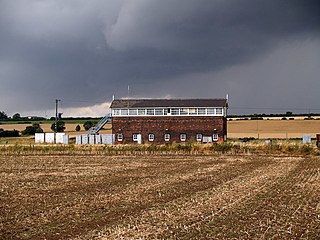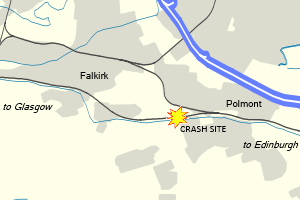| Wrawby Junction rail crash (1898) | |
|---|---|
| Details | |
| Date | 17 October 1898 |
| Time | 17:25 |
| Location | Wrawby Junction, Lincolnshire |
| Coordinates | 53°34′12″N0°25′11″W / 53.5701°N 0.4197°W Coordinates: 53°34′12″N0°25′11″W / 53.5701°N 0.4197°W |
| Country | England |
| Line | Great Central Railway |
| Cause | Goods train derailment |
| Statistics | |
| Trains | 2 |
| Deaths | 8 |
| Injuries | 26 |
| List of UK rail accidents by year | |
On 17 October 1898 at Wrawby Junction. [1] on what was the Great Central Railway near Brigg in Lincolnshire, England, a passenger train collided with a derailed goods train; killing 8 people and injuring 26 more. [2]

Wrawby Junction is a busy railway junction located a short distance west of Barnetby, North Lincolnshire, England and controls the confluence of the Network Rail routes from Lincoln, Retford and Scunthorpe towards Immingham and Cleethorpes. The junction was controlled by a large signal box of part-brick, part-wooden, construction and is now controlled from York Rail Operating Centre (ROC).

The Great Central Railway in England came into being when the Manchester, Sheffield and Lincolnshire Railway changed its name in 1897, anticipating the opening in 1899 of its London Extension. On 1 January 1923, the company was grouped into the London and North Eastern Railway.

Brigg (/'brɪg/) is a small market town in North Lincolnshire, England, with a population of 5,076 in 2,213 households, the population increasing to 5,626 at the 2011 census. The town lies at the junction of the River Ancholme and east–west transport routes across northern Lincolnshire. As a formerly important local centre, the town's full name of Glanford Brigg is reflected in the surrounding area and local government district of the same name. The town's urban area includes the neighbouring hamlet of Scawby Brook.
The passenger train was the 16:45 from Cleethorpes to Manchester consisting of a brake van, three passenger carriages and a rear guard's van. The goods train which had left Grimsby earlier in the day for Doncaster consisted of 44 waggons loaded with larch tree trunks, three trunks to a load secured with chains. The length of the trunks (up to 42 ft) necessitated the close coupling of the waggons. The goods train was being shunted on a curve at low speed adjacent to the main line when 5 trucks derailed just as the passenger train approached. One truck toppled over; its load of timber projecting over the main line. The brake van 'was carried away with the exception of the offside and roof'. The next two carriages were 'clean swept away' above the floor level; the first compartment of the third passenger carriage was also destroyed.

Cleethorpes is a seaside resort on the estuary of the Humber in North East Lincolnshire with a population of nearly 40,000 in 2011. It has been permanently occupied since the 6th century, with fishing as its original industry, then developing into a resort in the 19th century.

Manchester is a city and metropolitan borough in Greater Manchester, England, with a population of 545,500 as of 2017. It lies within the United Kingdom's third-most populous metropolitan area, with a population of 3.2 million. It is fringed by the Cheshire Plain to the south, the Pennines to the north and east, and an arc of towns with which it forms a continuous conurbation. The local authority is Manchester City Council.

Brake van and guard's van are terms used mainly in the UK, Australia and India for a railway vehicle equipped with a hand brake which can be applied by the guard. The equivalent North American term is caboose, but a British brake van and a caboose are very different in appearance, because the former usually has only four wheels, while the latter usually has bogies.
The investigation admitted that it was not possible to stop shunting operations from occurring on lines parallel and close to passenger running lines.









